Desks are an important staple of office and home office life that can have a huge impact on your productivity. The right desk has the features you need to be at your most productive, with the right amount of work surface, storage, and integrated technology. When you’re faced with a sea of desks, knowing the differences between the main types of desks makes it easier to find the desk that’s right for you and your space.

Pedestal Desk
A pedestal desk has a work surface supported by two pedestals. Each pedestal typically contains two to three drawers, a file drawer, or a cabinet, and there is often a shallow pencil drawer underneath the work surface between the two pedestals. Pedestal desks often have half or three-quarter pedestals paired with short legs. If the desk has a modesty panel to hide the user’s legs, the modesty panel will only be half or three-quarter size. A pedestal desk is a great choice for those who want storage along with a work surface.
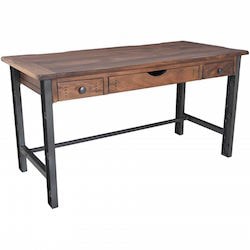
Writing Desk (Leg Desk)
A writing desk, also called a leg desk, has a work surface supported by legs in a manner similar to a table. Writing desks frequently contain one or more shallow pencil drawers underneath the work surface, but don’t have any other storage. A writing desk is a great choice for smaller spaces or those who don’t need much storage in their desk.
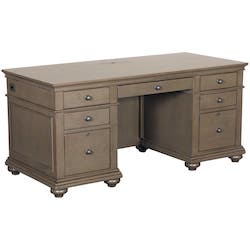
Executive Desk
An executive desk is similar to a pedestal desk in that it has a work surface supported by two pedestals, but there are a few key distinguishing features that separate executive desks from pedestal desks. An executive desk is wider and deeper than a pedestal desk, has full pedestals that go all the way to the floor, and has a full modesty panel between the pedestals at the back of the desk. Executive desks also have two file drawers, while a pedestal desk may have only one file drawer or none at all. An executive desk is a good choice for those who want a larger work surface with a maximum amount of storage.
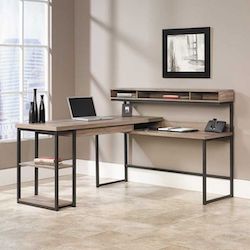
Return Desk (L-Shaped Desk)
A return desk, also called an L desk or an L-shaped desk, is made up of a main desk and a return—an additional work surface that is positioned perpendicular to the main desk, creating the L shape. The return is typically on the right side of the desk, though modular desks allow users to put the return on the left. Return desks can have two pedestal bases, two sets of legs, or one pedestal and one set of legs. They are typically finished on all sides to allow users to float the desk in a room. A return desk is a good choice for those who want a large work surface.

Secretary Desk and Drop Leaf Desk
Unlike other desks, a secretary desk has a temporary workspace that can be folded away to save space or to hide clutter. Secretary desks have a compact, flip-down work surface near the top of the desk with storage hidden behind the work surface. They typically have a cabinet or chest of drawers underneath, while similar drop front desks do not have this feature. Secretary desks typically have a smaller footprint than other desks, and can easily hide your workspace. A secretary desk is great for small spaces and those who need a large amount of storage but don’t need a large workspace.
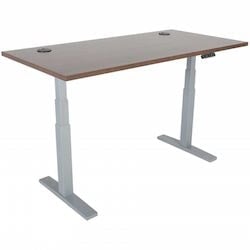
Adjustable Height Desk (Sit-Stand Desk)
An adjustable height desk, also called a sit-stand desk, changes heights to allow users to work at the desk while seated or while standing. Most adjustable height desks have an electric motor to move the desk between heights, though some desks have other mechanisms. Like writing desks, adjustable height desks either don’t have any drawers or have only shallow pencil drawers. An adjustable or sit-stand desk is a great choice for those looking for a versatile or ergonomic workspace, as well as workspaces with multiple users.
ADDITIONAL TIP: You can also purchase the adjustable base mechanism separately and attach it to an existing desk to make it height adjustable.
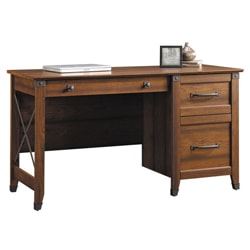
Computer Desk
Computer desks overlap greatly with other types of desks and are characterized mainly by their smaller size. They frequently contain one full or partial pedestal, one side panel or set of legs, and a keyboard tray, though some computer desks are almost identical to small writing desks. A computer desk is a good choice for smaller spaces and those who don’t need a large work surface.
Many desks of all types have tech-friendly features to help boost your productivity. These include things like integrated power outlets and USB ports that allow you to easily charge your devices, pullouts for tablet usage, and pullouts that allow easy access to and storage of peripherals like printers.
Understanding the different features of different types of desks, including work surface, storage space, and tech-friendly elements, will allow you to choose the desk that best suits your needs and allows you to work smarter.









































